|
3 flights, a surprise encounter with a fellow COPster, an eventful taxi ride, and two apartments later, I begin to settle into our GORGEOUS apartment in the Miraflores district in Lima, Peru. After meeting a fellow undergraduate COPster on my flight from Miami to Lima, we decide to travel to the amazing Miraflores district together. Along the way we encounter a phenomenal taxi driver who gives us a tour of the city throughout our ride and helps me find and check-in to the apartment we've rented overlooking the Pacific Ocean. We drop off our luggage and set off to explore El Malecon, a six mile stretch of beautiful parks directly overlooking the Pacific Ocean in Miraflores (don't worry we didn't walk all 6 miles after extreme sleep-deprivation!). Walking around El Malecon, witnessing the beautiful gardens and monuments surrounding us, I am reminded of the vast task that lies before us in the coming weeks. Negotiators, world leaders, NGOs, activists, students, press, professors and citizens from around the world will gather at the 20th Conference of the Parties (COP20) in an attempt to negotiate and agree upon a framework for a universal climate agreement to be adopted in Paris in 2015. Looking ahead to the hectic, challenging and inspiring week ahead I can't help but realize that places and moments such as these are exactly what we're fighting for in the battle to reduce carbon emissions, and create effective mitigation and adaptation strategies to address and reduce the effects of climate change.
Sitting on a park bench overlooking the Pacific Ocean on a beautiful, sunny, warm, spring day, I recognize the runners that pass by, the couples and friends who sit snuggling on the grass or animatedly chatting on a walk, holding hands, kickboxing, walking dogs, and throwing frisbees, are all members of the same struggle, whether we know it or not. We are able to experience moments such as these because we are fortunate enough to still have the opportunity to enjoy a place like El Malecon. A place that hangs in the balance of changing weather patterns, sea level rise and erosion of its beautiful cliffs overlooking the Pacific. The beauty of places like El Malecon depend on the actions we take today to ensure their preservation and protection. As we begin the next step in our journey preparing and attending the Climate Talks in Lima on Monday, December 1st, I am reminded that the fight against climate change is a constant battle, and am reinvigorated in my commitment to continue learning, collaborating, and educating. PLEASE JOIN US throughout the next two weeks (and beyond) to engage in a discussion of what climate change means to you. Your voices and opinions are of the utmost importance, so please share comment and message us to start a dialogue on these issues!
3 Comments
 Where would we be without plants? Most people do not think of plants very often, myself included. They are not going anywhere, and I always seem to forget about them until that magical day in May when the buds arrive again. Although they seem like they are not doing anything. Below the surface, plants are a bustling, coordinated factory, on which we depend on for virtually everything in our lives. Now, you might be confused as to why I am writing about plants in the first place. As a chemistry major, botany is definitely not a required course. I have a biology minor though, which requires botany as part of the introductory sequence. At first, I was not thrilled to take the class. I assumed that since plants were stationary, they were insignificant. I couldn’t have been more wrong. Botany is one of the most fascinating classes that I’m enrolled in currently. (Like did you know that roses don’t have thorns, they have prickles? What about that a banana is technically a berry, while a strawberry is not? Or that certain mosses can be used as bandages?) Despite all these bizarre trivia facts, I set out on a minor quest to see if and how plants are affected by climate change. The simple answer is absolutely, but just how much? Factors such as changes in temperature, rainfall, or soil type all play an important role in how a plant functions and survives. As the temperature changes, the overall diversity of plants will decrease. Certain plants will not be able to adapt quick enough, and the current estimates suggest 1 in 5 plants are in danger of extinction. Other plants are losing their habitat, such as those in the artic, alpine regions, islands, and coastal species. As their homes disappear due to climate change, they could have nowhere to go (seeing as they can’t get up and walk somewhere new). As more and more plants disappear due to the loss of habitat and temperature change, this will cause a domino effect on other species. All the plants you see are interdependent on one another, which animals use as food sources. If just one link is taken away, the whole system of plants and animals can come crashing down. Now, some of you at this point are saying to yourself, “Why should I really care Nina?” and I completely understand (I’m also impressed you made it this far into my blog). The next important question then is how will changes in plants effect humans? One of the easiest (and tastiest) places to begin is food. Most (if not all) of the food you eat is either a plant or has been fed by a plant. As global temperatures rise, we will have to cut back on certain foods and forget about some completely. These foods include corn (and the animals that eat it), coffee, chocolate, seafood, maple syrup, beans, cherries, and wine grapes. Sadly, food is only one of the many plants we use in our daily lives. We use wood to build our houses, floors, cabinets, musical instruments, and for heat. We used certain herbs and plants as traditional medicines. We use plant fibers to make clothing, ropes, mats, baskets, hats, and cushioning. We use other plants for cosmetic purposes, such as shampoos, lotions, cleansing, hair dying, and perfumes. Bottom line: we need plants. Just as humans are taking action to reduce climate change, plants have pitched in to help take care of the Earth. Trees actually help reduce air pollution. They pull gases like ozone, sulfur dioxide, and nitrogen dioxide into their leaves and then chemically alter them so they are no longer dangerous to humans. In a sense, trees are really big filters. For those of you that like numbers, the US Forest Service and The Davey Institute performed a study and estimate that forests removed around 17.4 million tons of air pollution in 2010. This caused health care savings of $6.8 billion, and 850 human deaths were avoided. In addition, genetically modified plants can literally vacuum up toxins from the ground. Certain poplar trees or grasses can be planted in areas where there are dangerous residues in the soil, particularly military explosives, and they will pull toxins out of the contaminated ground and water. Technically known as phytoremediation, this process is 10 times cheaper than other methods and much more aesthetically pleasing. This process has actually been implemented in areas all across the United States, especially in abandoned military bases. 3,000 trees were even planted in Muskegon, Michigan to remove hazardous chemicals from the ground and to prevent water runoff. Plants are more than pretty: in a way, they take care of us. Climate change is a real issue that is taking place in this world at this time. I urge you to join me in taking small steps toward being more accountable for what happens to our world. So where would we be without plants? We would be hungry, cold, sick, naked, uncomfortable, and smelly. I don’t know about you, but that sounds quite terrible to me. So take a stance, and do something to change the world around you.
However, in the Arctic there are numerous deposits of natural resources that are becoming more accessible every year as a result of climate change. These rich deposits include an estimated 25-30% of the world’s undiscovered natural gas and 15-20% of the world’s undiscovered crude oil reserves. Large deposits of diamonds, rare earths, and other minerals such as palladium, platinum, and zinc are believed to be in the Arctic as well. All eight of the permanent members of the Arctic Council, including the United States, Canada, Russia, and the Scandinavian countries have shown considerable interest in these untapped resources. It is possible that the race to this wealth of natural resources in the Arctic could lead to tension and strained relations in the region. We have seen this already. In 2007, the Russians planted their flag on the sea floor at the North Pole. Within months, other countries in the region responded by increasing naval patrols in the Arctic and staking out sovereignty claims. It appeared that tensions were really heating up in the region. Since then though, Arctic countries have settled long-standing territorial disputes and other disagreements in a peaceful and orderly manner. So, for now anyway, it looks as if tensions between the nations in the Arctic have calmed down significantly. Another possible point of contention that may prove to be of consequence in the Arctic is that of the Northwest Passage and the Northern Sea Route. With the ice cap in the arctic shrinking, it is soon going to be possible to sail ships through the Northwest Passage, which winds through the Canadian Islands in the Arctic Ocean. As a result of this, will the Canadian government be able to impose their laws on ships sailing through the Northwest Passage? Also, the Northern Sea Route, which hugs the Russian coastline in the Arctic, saw four commercial ships sail through its waters for the first time in 2010. The Russian government has even set up an office in Moscow thats job is to monitor marine weather and issue shipping permits for the Northern Sea Route.
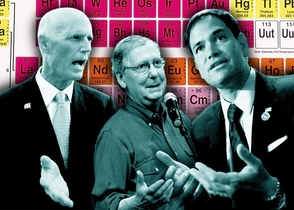 Photo illustration by Ellie Skrzat. Photos by Joe Raedle/Getty Images, Win McNamee/Getty Images, and Hemera Technologies/Thinkstock. Photo illustration by Ellie Skrzat. Photos by Joe Raedle/Getty Images, Win McNamee/Getty Images, and Hemera Technologies/Thinkstock. Recently, I've been becoming less pessimistic towards our government with regards to climate change action. In my environmental law class, I've been learning more about the regulations that the EPA has set to discourage greenhouse gas emissions as well as Obama's Climate Action Plan. In our trip to Washington DC, three other student delegates and myself were able to talk to a few employees from government agencies that were clearly passionate about climate change; they gave us a glimpse into what their agencies are doing to fight climate change. Learning first-hand about what the government has going on to address climate change gave me a lot of hope. After the recent election, I'm not sure what to think. Future Senate majority leader, Mitch McConnell, is from Kentucky, where coal-mining is a large part of their economy. He has made it clear that he has greatly disapproved of Obama's actions to decrease the use of coal. While campaigning, he promised to drastically cut the EPA's budget. James Inhofe from Oklahoma, an avid climate change denier, will be the Environment and Public Works Committee leader in the Senate. On this hand, it seems that progress towards mitigating climate change will be slowed or virtually halted, as a result of the recent election. On the other hand, climate change is becoming less and less of an issue that divides parties. The infamous "I am not a scientist" response that we have seen from politicians is becoming less tolerable. Climate change is becoming increasingly difficult for politicians to simply ignore in their platforms. Hopefully these trends will cause more politicians to rethink their stance on climate change and its role in policies. If not, some other aspects that have given me more hope include that the Obama administration has been working to ensure that a future international climate change treaty would not require Senate's approval. Another thing is the ever-decreasing costs of solar power and other renewable energy sources--hopefully these will start out-competing conventional fossil fuels in the near future! Note: I apologize for getting a bit political in this post; this has just been on my mind a lot after the results from the election. I would love to hear others' opinions on these matters! Articles used as a reference: http://news.nationalgeographic.com/news/2014/11/141105-united-states-congress-election-climate/ http://www.slate.com/blogs/future_tense/2014/11/07/climate_change_in_the_2014_midterms_republicans_may_be_rethinking_positions.html http://www.nytimes.com/2014/08/27/us/politics/obama-pursuing-climate-accord-in-lieu-of-treaty.html?_r=0 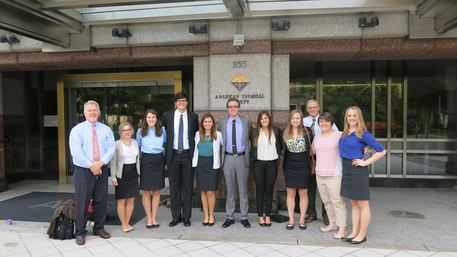 Washington, D.C.: the capital of the country. When you’re not going there to be a tourist, it can be quite the stressful place. First of all: the roads. Cars weaving in and out of lanes like the pavement is their personal playground and pedestrians walking across the road like they’re invincible; it’s enough for anyone’s anxiety to shoot through the roof. And if you were already nervous…? Well, at that point, the only thing you feel like doing is curling up for a nice, long nap. That’s what it was like for me a couple of weeks ago when I headed into Washington, D.C. with two professors from my college and a co-student delegate. We were headed towards the headquarters of the American Chemical Society (ACS) to meet with the seven other student delegates who would be attending the United Nations Framework Convention on Climate Change (UNFCCC) 20th Conference of the Parties (COP20) in Lima, Peru come December 2014. Once we’re there, we will have the opportunity to be eyes and ears for our generation, getting first-hand experiences in seeing how world leaders talk about climate change. But there, in D.C? That is where our journey began. Those of us in the program would finally get to meet each other and learn. We would get to talk to real representatives who worked in Washington every day and get to know more what it was like on the official side of the proverbial curtain. We would learn how to effectively get our message across in order to see this program flourish. The first night, we were greeted with a “welcome dinner” at the ACS headquarters itself. We got name tags, sat around tables and began to eat as we listened to a presentation that would go over the next day’s agenda. We were given folders with information, and, with a warm smile, were told that we’d have homework to do for the next day. It seemed that even outside of our campuses, school life never failed to follow us. Returning to the hotel that night, we split into our respective groups in order to go to two different locations the next day, and got to work. We had a couple of articles to read and had to do research on who we’d be meeting with the next day in order to construct cohesive and comprehensive questions. We did what we had to do, but as undergraduates will, we began to steer off course, and talk about the topic that we were all coming together on: climate change. Despite the fact that we were exhausted from a long day of travel with only a longer day ahead of us -- none of it mattered when we could come together and talk about climate change and what we might experience in Lima. We are all more than excited to go one of the most important climate conferences in order to learn, and be the bridge between the formal talks that happen at these conferences, and to the people of our generation. The students who will attend the conference with me are people who share my ideals: my passion. As midnight got closer, I’m sure we were the only people in the hotel lobby who were throwing our hands up on a Wednesday night, squirming in our chairs, excitedly chatting about all the things we wanted to do, all the things we had to learn. Something even more important than us coming together, though, is the fact that we are so very different. We come from completely different parts of the country (and one student is even from Canada). Our pasts are different, and we hardly agree on every other issue there is -- in fact, some of us have completely opposite opinions. Some of us are more conservative, and some of us are liberal; some of us wish to look into the science of climate change, while others want to pursue policy or the social sides of this issue. But that’s the thing about climate change: it brings us all together. There isn’t a single person on the face of this planet who won’t be affected by climate change in some way, whether they realize it or not. Some people more so than others (Florida has lost over 200 feet of coastline since 1980), while some might feel it in their pockets, or have longer, harsher, winters (the “Winter Vortex” of last winter might ring a bell). But we’ll all feel it. The differences between us don’t matter in regards to climate change; we are all on the same level. We all share this Earth, and so, it is all of our responsibilities to take care of it.
Humans might have made this mess, but I am more than confident in the fact that we can clean it up. The road ahead of us regarding climate change is long and hard, but to get anywhere, we need to take the first step. Like us in the project, your past doesn’t need to have a bearing on your opinion on climate change. Your other beliefs don’t need to affect how you act or live when it comes to living a healthier, more sustainable life. If you haven’t already, begin your journey here, with us. It’s only together that we, humanity, can make the difference. 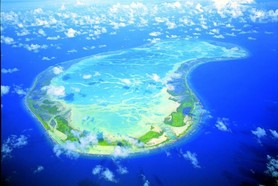 Climate change is one of the biggest threats facing our generation today. The impacts will span people, places, and generations. Have you noticed yourself thinking that the summers are just a little more extreme than you remember? Or that there’s been more snow in the winters? That you don’t remember always hearing about all these draughts in California? The effects of climate change are wide spread and may not seem connected, but all of these symptoms can be traced back to a warming world. The effects of climate change are already present today and are having an impact on people right now, even if they are not yet noticeable to everyone. Already citizens of island nations such as Kiribati are searching for a new home and leaving. It is predicted that some of these nations will have sunk beneath the sea by the end of the century, completely destroying homes where people have lived for generations. Climate change has a real effect on people; the trick is getting people who are do not see tangible impacts in their daily lives to understand the importance and the direness of the situation. The United States is one of the only places where you can still find people arguing about the existence of climate change, instead of what can be done to help. I think the most important thing that can be done right now is to increase climate change literacy and help people to understand that climate change is real and relevant to everyone. Lifestyle changes are hard to make, but they are necessary. I became interested in climate change during the past few years in school. In my research at the University of Alabama, I work on green chemistry to make bio-renewable materials from what is already in the world around us. We use chitin, which comes from shrimp shells to make different types of materials. Working with this group is part of what got me interested in the idea of working with the environment. To better help the environment, we should use technology and work in ways that come from the earth and work with the earth, and not against it. 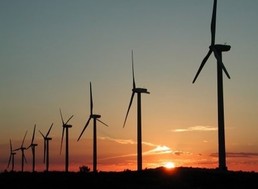 Reaching out and spreading awareness is just as important as the technological advances that help us to mitigate climate change. There have already been big steps in things like energy technology that are better for the environment. Just last month, wind turbines in the UK produced enough energy to power all the homes in Scotland for a month. “Wind turbines alone generated an estimated 982,842MWh of electricity, enough to power 3,045,000 homes in the UK - equivalent to 126% of the electricity needs of every home in Scotland.” - WeatherEnergy organization in the UK Things are looking up and moving in the right direction. That’s why I am so excited about this journey. Having the opportunity to attend the UN Climate Change Conference will give me firsthand experience of what people around the world think of climate change, and what they are doing to help right now. I will use my experiences to do my part in getting people interesting in the issues of climate change. Climate change affects us all, and we should all do what we can to help. |
Categories
All
Archives
March 2024
|
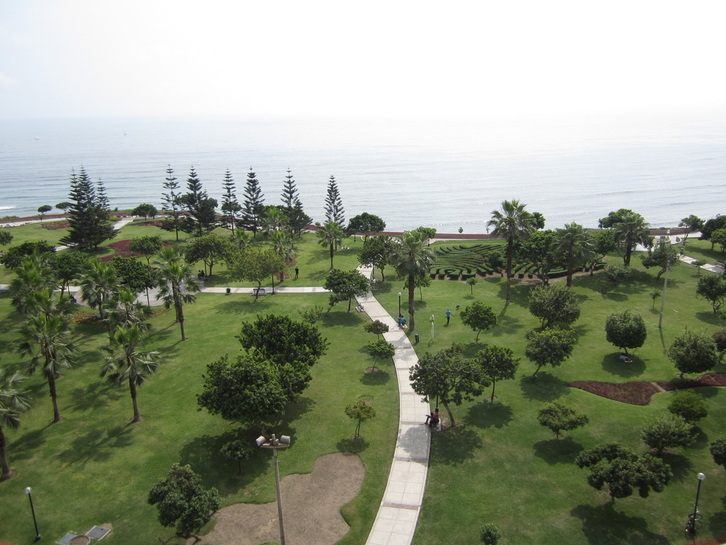

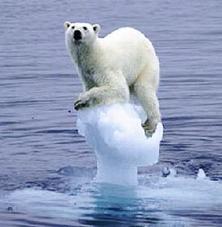
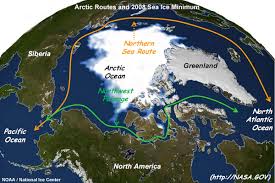
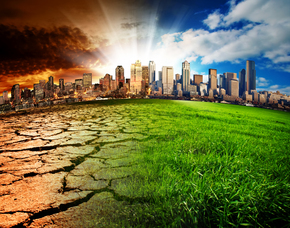
 RSS Feed
RSS Feed
